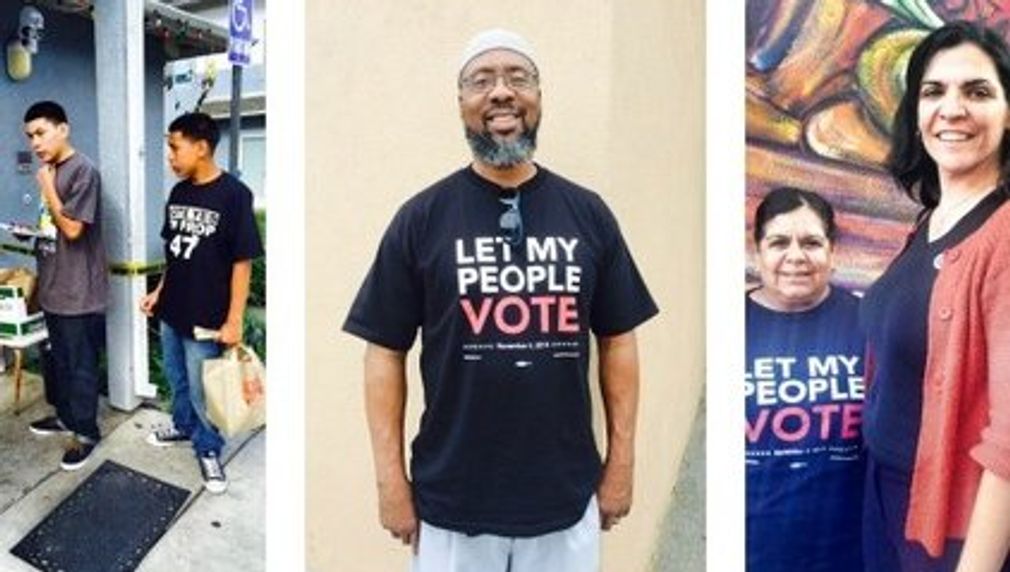Turning Out Voters Through Local Relationships
LA will not solve its problem of racial inequity without greater civic participation. Voter turnout is at a historic low, and LA Voice has a plan to turn that around. Barriers to voting can be overcome by leaders from diverse faith backgrounds investing in local relationships to increase participation. When LA Voice leaders turn out all 40,000 people represented by our 36 diverse congregations-- AND their neighbors--it will shift the electorate towards a more representative, inclusive county.

In what areas of Los Angeles will you be directly working?
Central LA
East LA
San Gabriel Valley
San Fernando Valley
South LA
Westside
Long Beach, Watts
How do you plan to use these resources to make change?
Engage residents and stakeholders
Expand a pilot or a program
Mobilize for systems change
Develop local leadership and power
How will your proposal improve the following CONNECT metrics?
Rates of volunteerism
Voting rates by race
Percentage of Angelenos that volunteer informally (Dream Metric)
Government responsiveness to residents’ needs (Dream Metric)
Describe in greater detail how you will make LA the best place to CONNECT.
Los Angeles remains segregated not just geographically, but by civic participation. We have one of the lowest voter turnout rates in the country. The most recent local election in May of 2015 saw an abysmal 8% turnout, and turnout in low-income communities and communities of color was even lower. But LA Voice has a plan to bring people together across race, class, and faith to reverse LA’s low voter turnout-- not just in this election, but for years to come.
The traditional voter turnout tactics used by most campaigns don’t work in low income communities and communities of color. What does work is local, trusted community leaders working to turn out their neighbors. To build a truly representative LA electorate, we need to “meet people where they are”, and for these communities that often means their church, mosque, or synagogue. LA Voice, with our 36 member congregations representing 40,000 families in LA County, is uniquely poised to turn out votes for the Fall 2016 elections. In 2014, LA Voice trained over 500 volunteer leaders to talk to 36,081 low-propensity voters, mostly voters of color, and our contacted voters voted at a 7% higher rate than the County average; now, we have a plan that will engage even more leaders to turn out even more voters in a more strategic way.
Our plan is based on three principles:
Leader ownership: LA Voice leaders, not staff, will own this work. Leaders will commit to registering and turning out their congregations plus 5-7 precincts in the vicinity, guaranteeing that every eligible voter will be contacted by a trusted local leader. Leaders will turn out their congregations through non-partisan preaching and teaching about voter engagement, voter registration drives, and phone banking congregational members. Then they’ll turn out their neighborhoods by hosting voter registration house parties, running targeted voter registration phone banking and canvassing, and canvassing at community events.
Starting early: We’re developing our teams now, not waiting until just before the election. This guarantees that we’re building a sustainable movement that can transform the electorate long term.
Transformational relationships: A simple, transactional message won’t increase voter turnout in lasting way. We are asking people to vote as part of a larger strategy to transform LA into a more just, equitable place to live, and to keep working alongside each other year after year, not just during the election.
Please explain how you will evaluate your work.
Evaluation is a key component of our voter turnout work. By tracking all data in the Voter Activation Network and analyzing what worked best in our 2012 and 2014 campaigns, we were able to develop our plan for the current election cycle. We will partner with PICO National Network to conduct research and identify best practices for our voter turnout work. We will look at the effectiveness of our work over the past two election cycles by tracking our contact rates with community members and comparing them to actual voter turnout. We will evaluate the effectiveness of different forms of contacts (phone banking compared to in-person, etc) in order to continually improve. We are also part of a learning community of organizations in LA and the state that constantly evaluates best practices and the effectiveness of new technology.
How can the LA2050 community and other stakeholders help your proposal succeed
Money (financial capital)
Volunteers/staff (human capital)
Publicity/awareness (social capital)
Infrastructure (building/space/vehicles, etc.)
Technical infrastructure (computers, etc.)
Community outreach
Network/relationship support